Download as PDF, PPTX
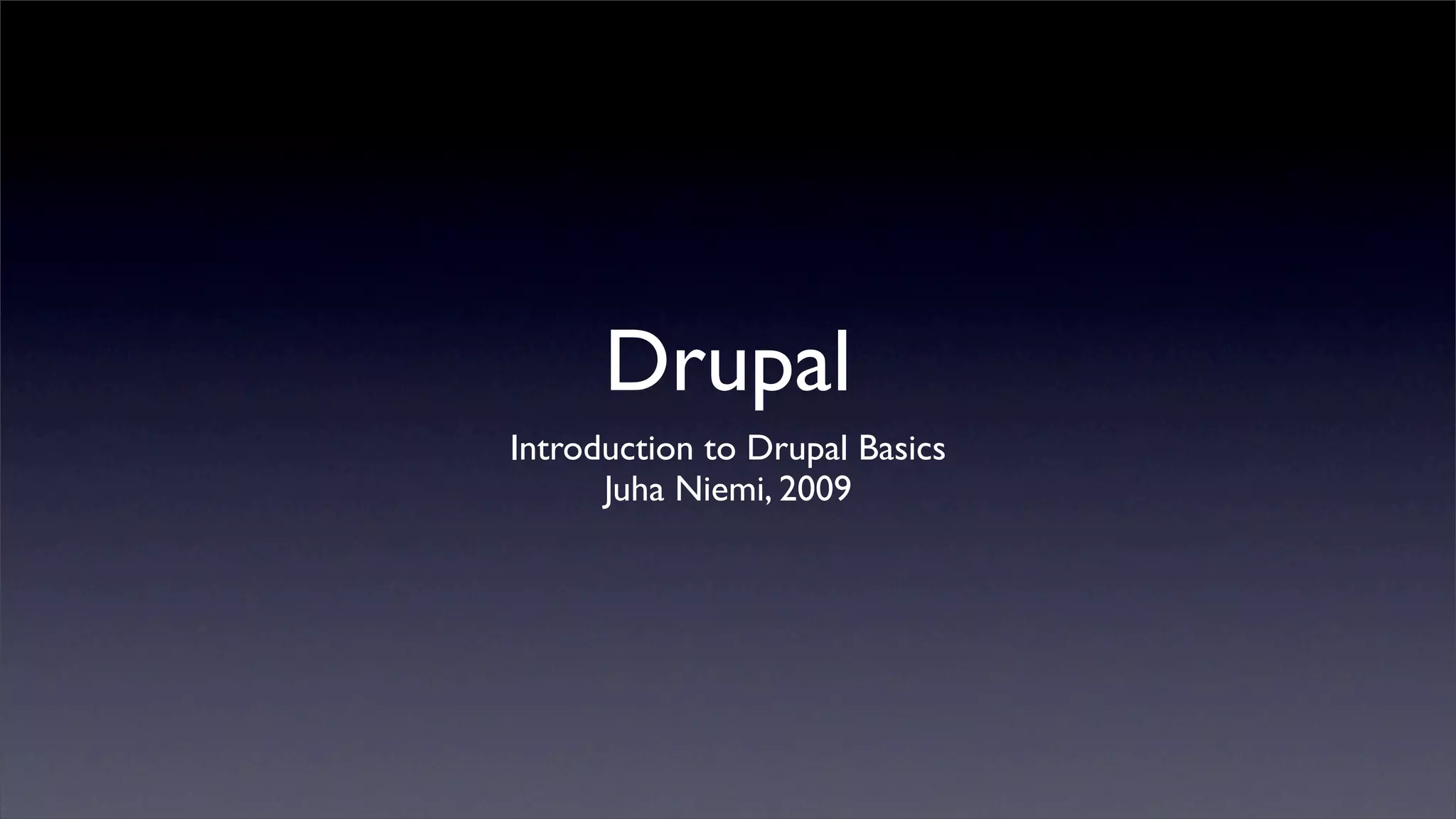
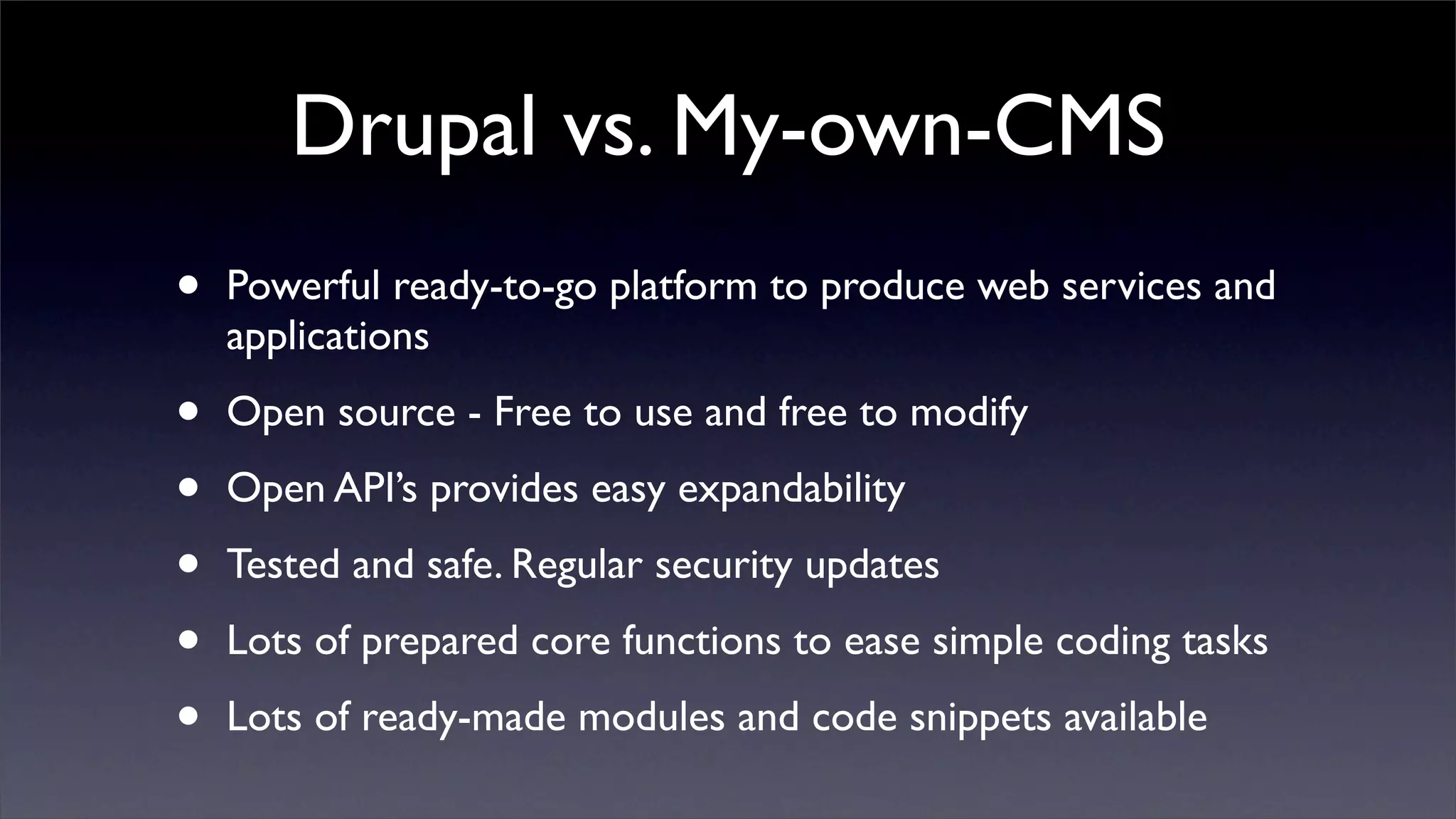
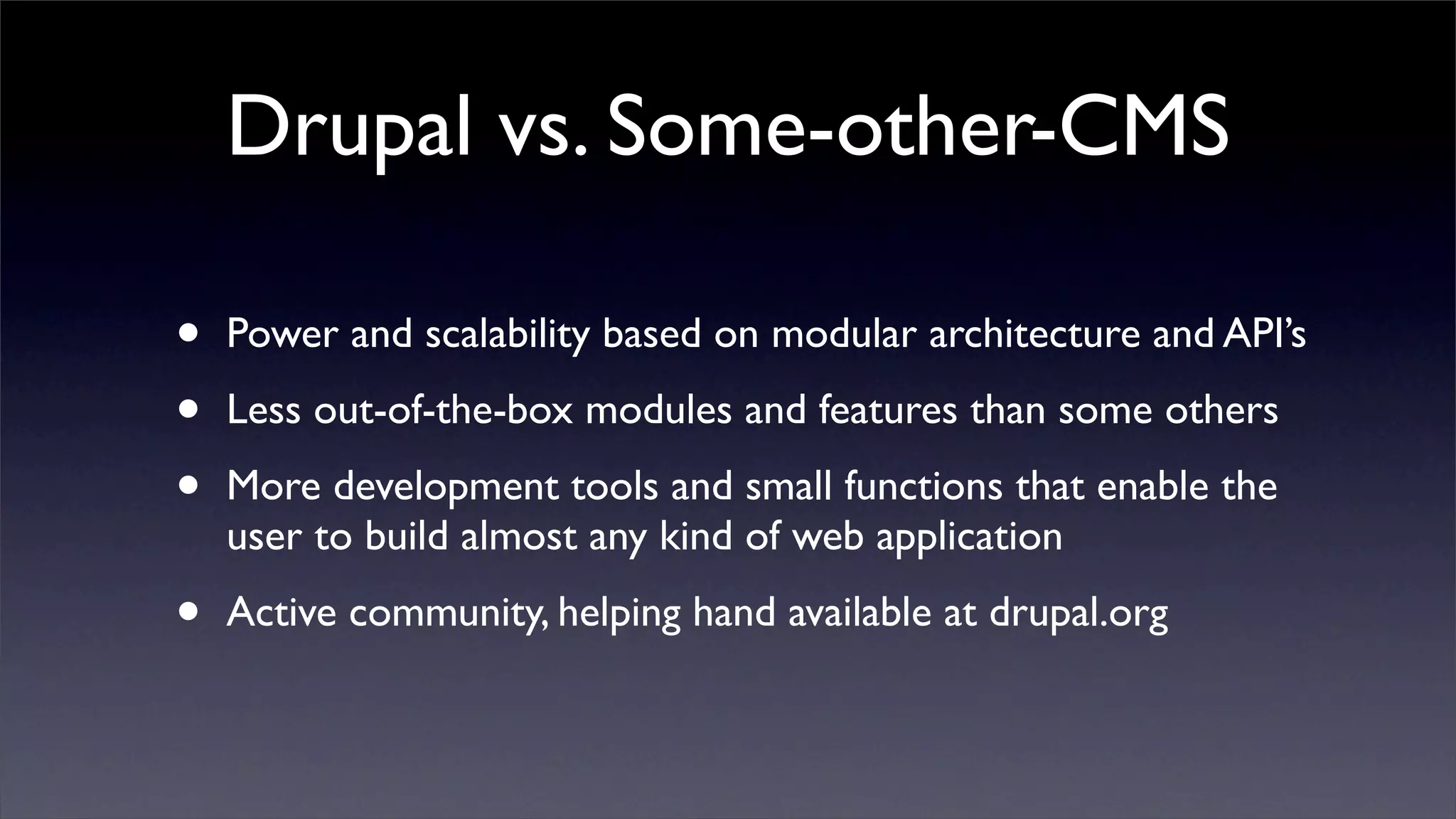
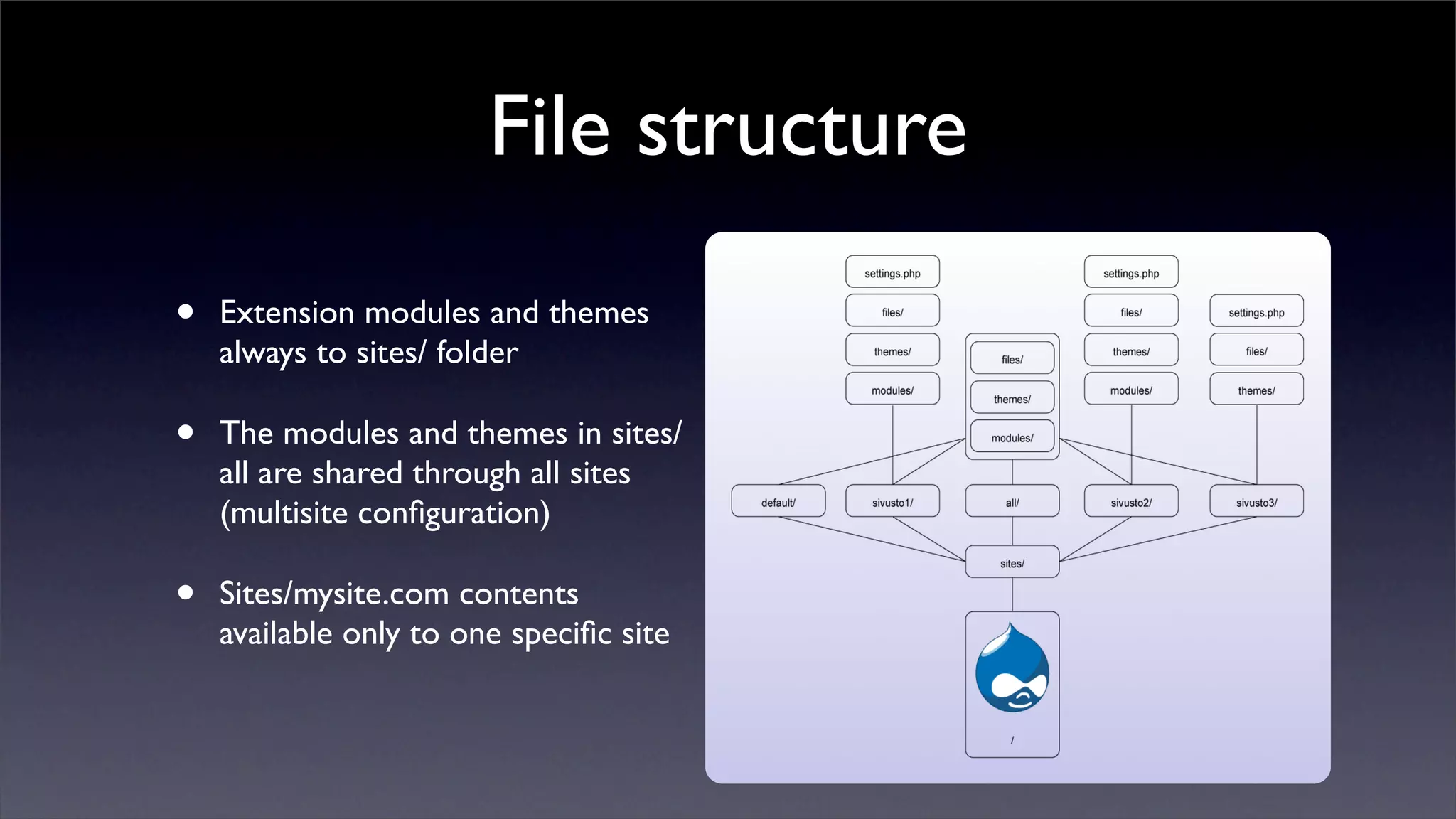
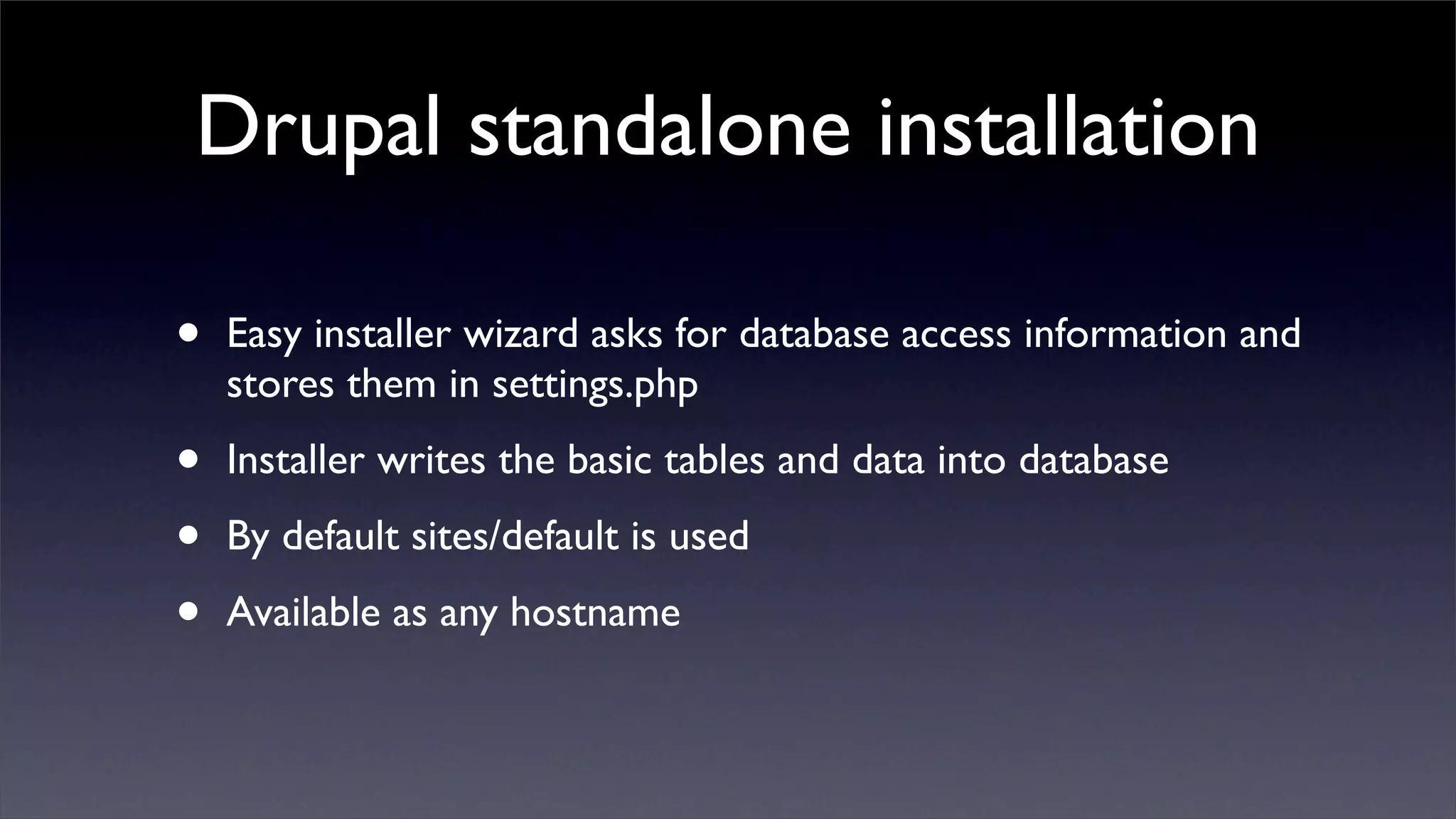
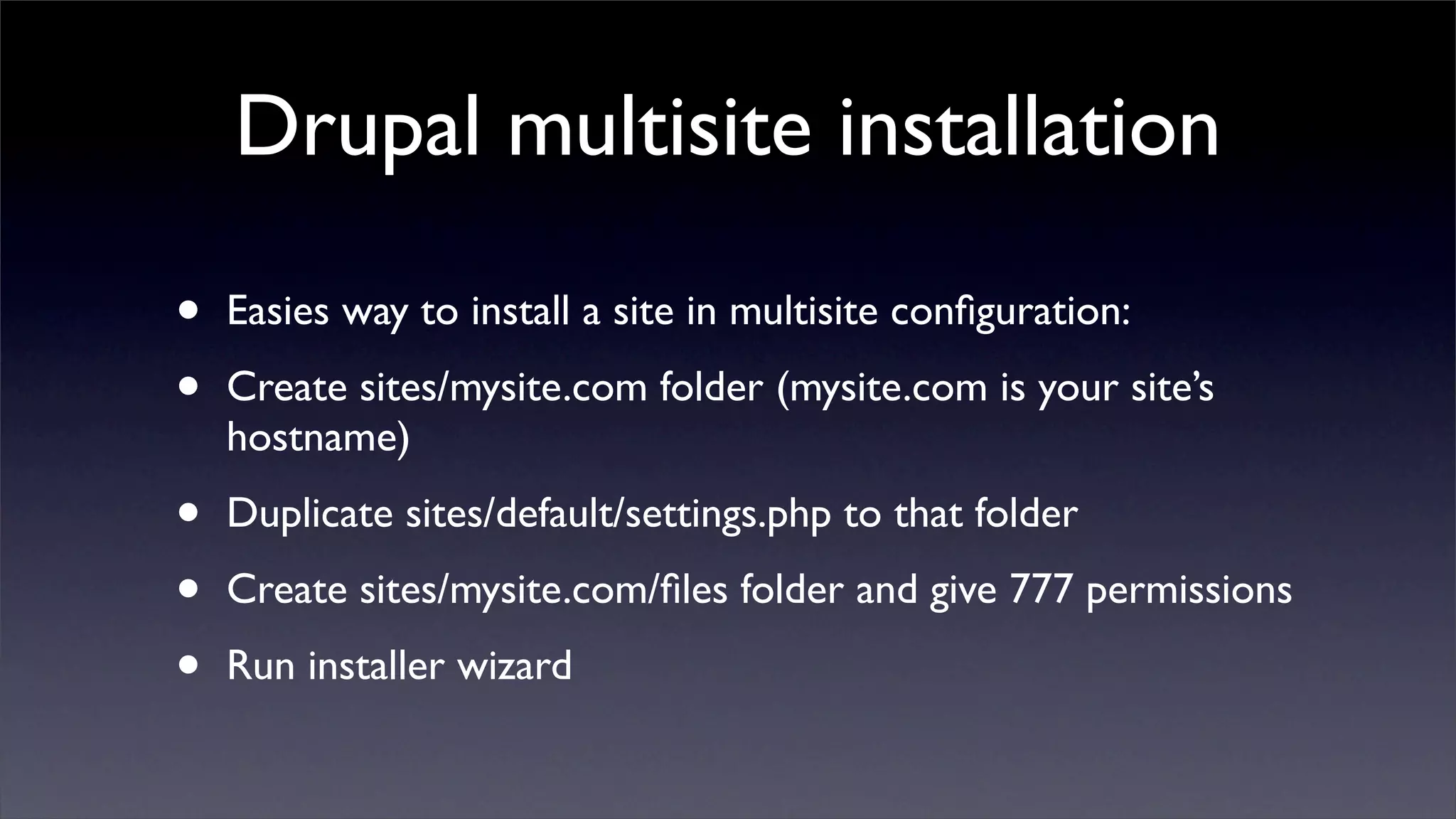
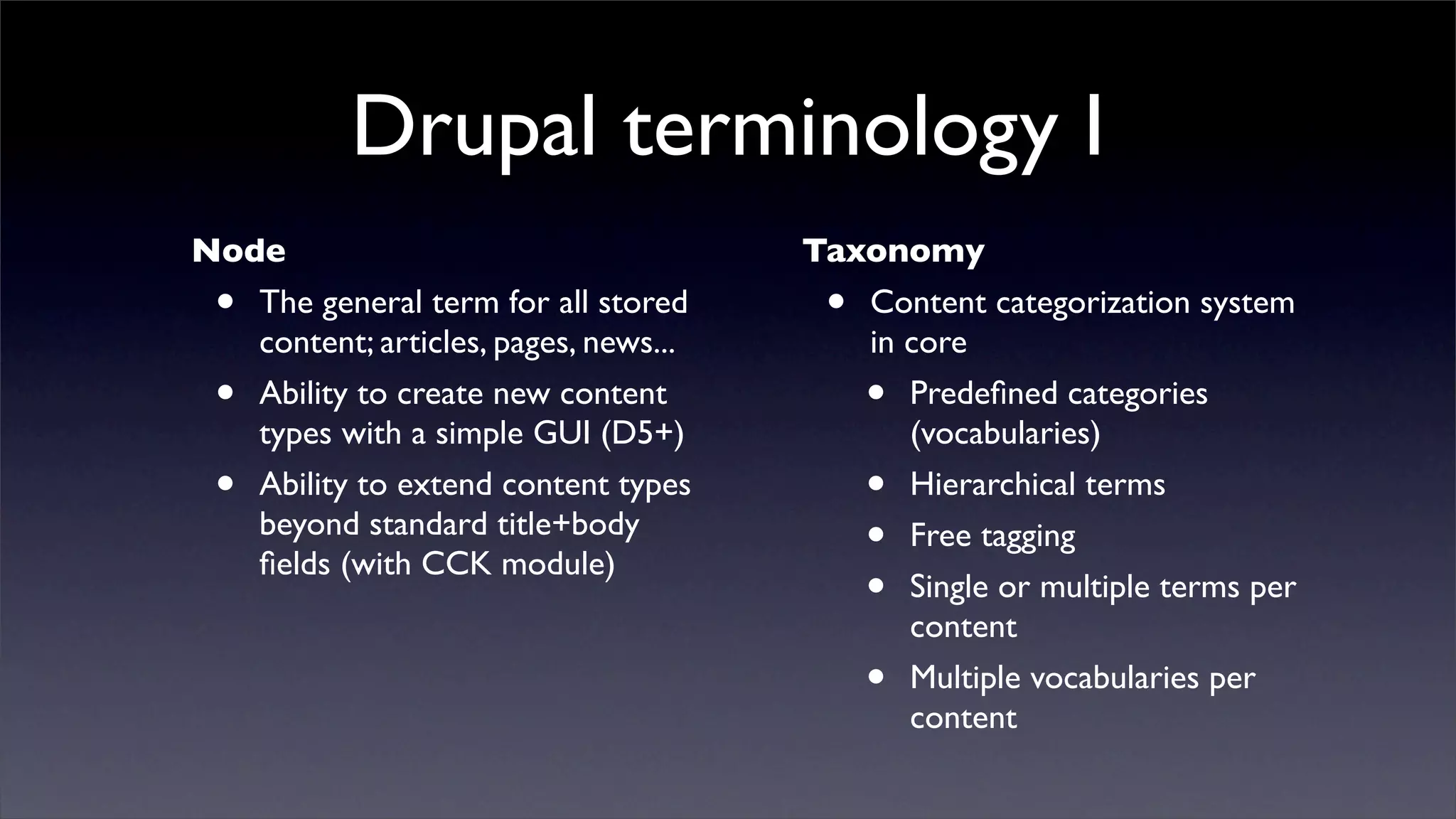
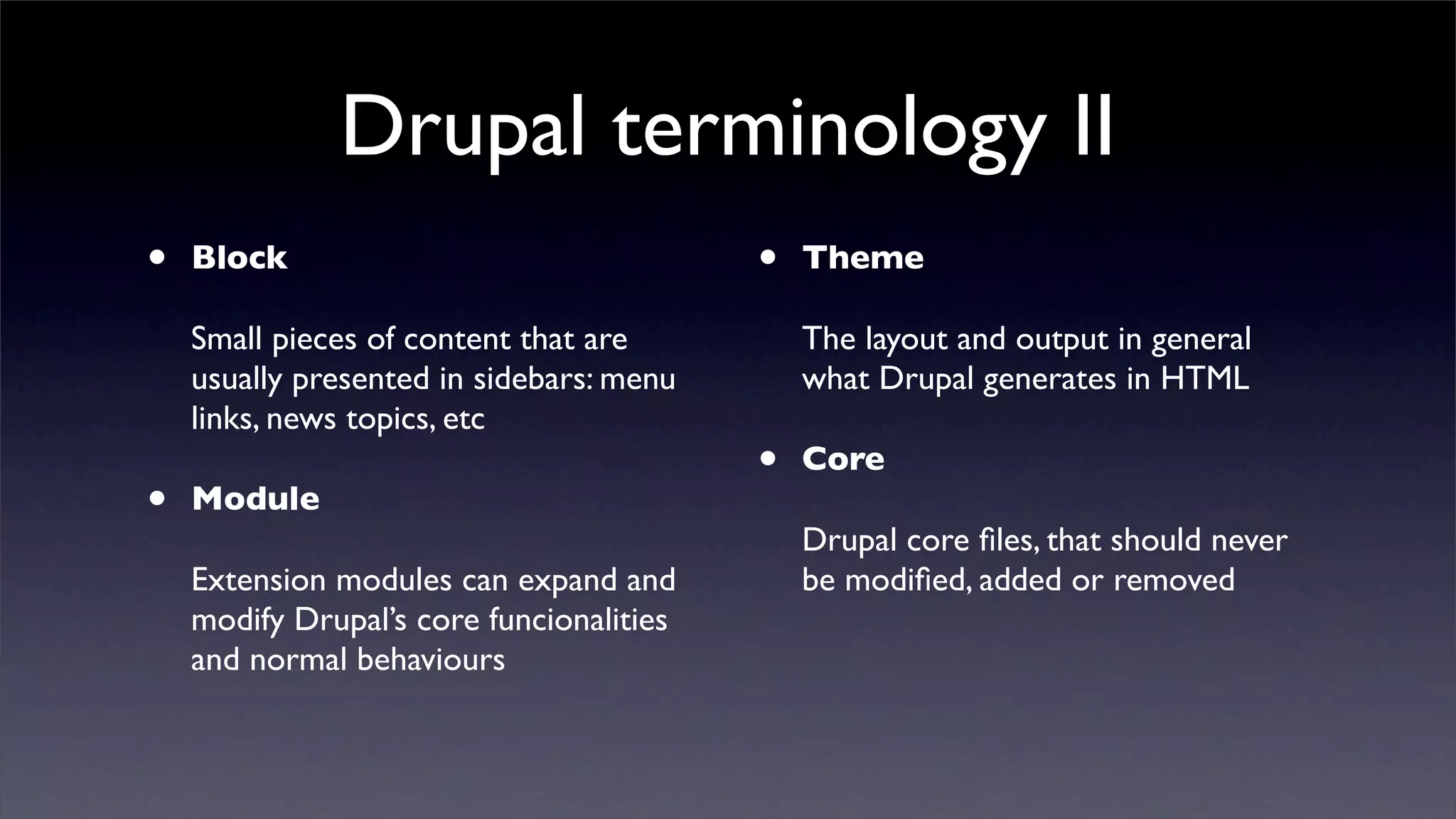
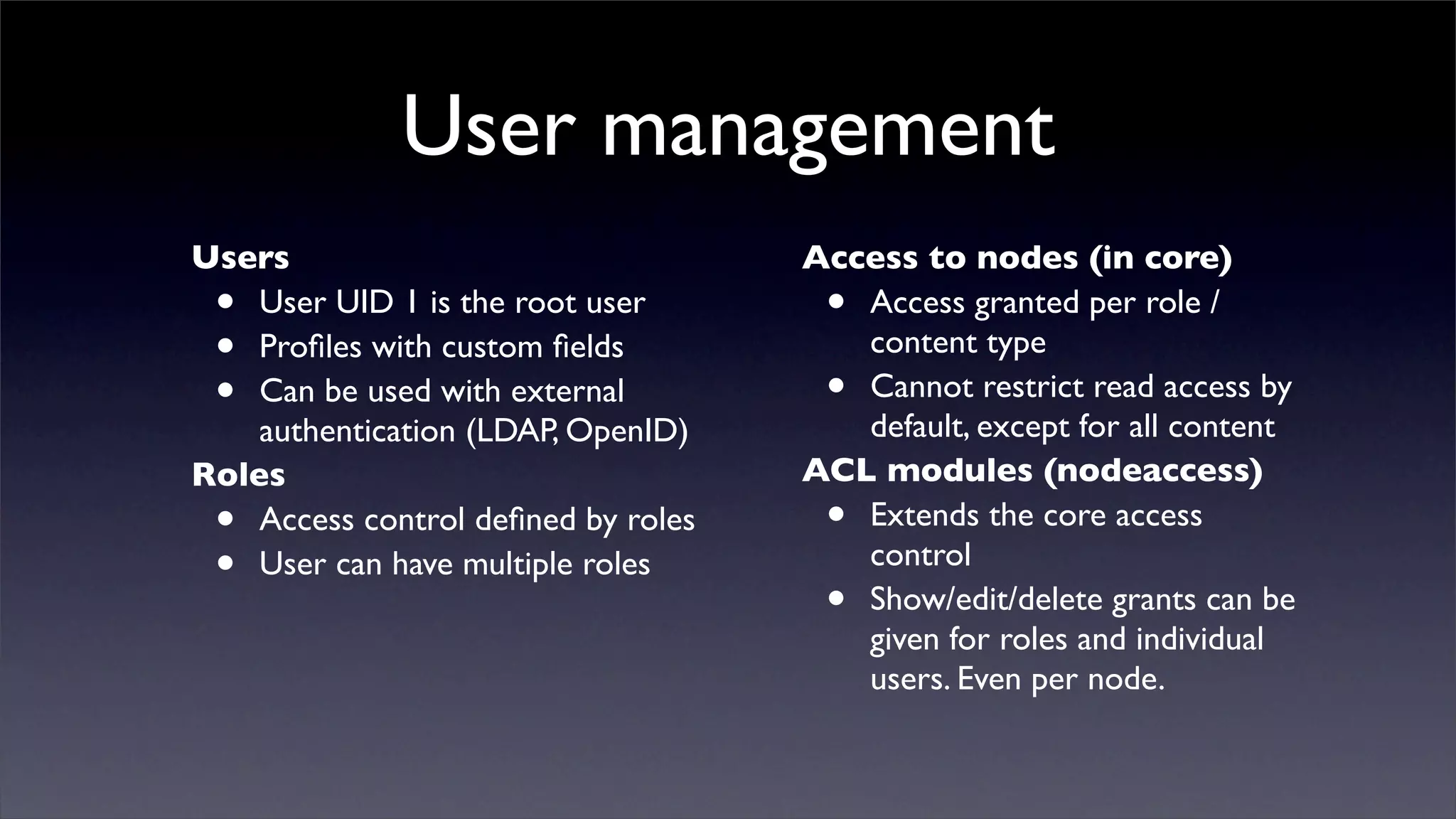
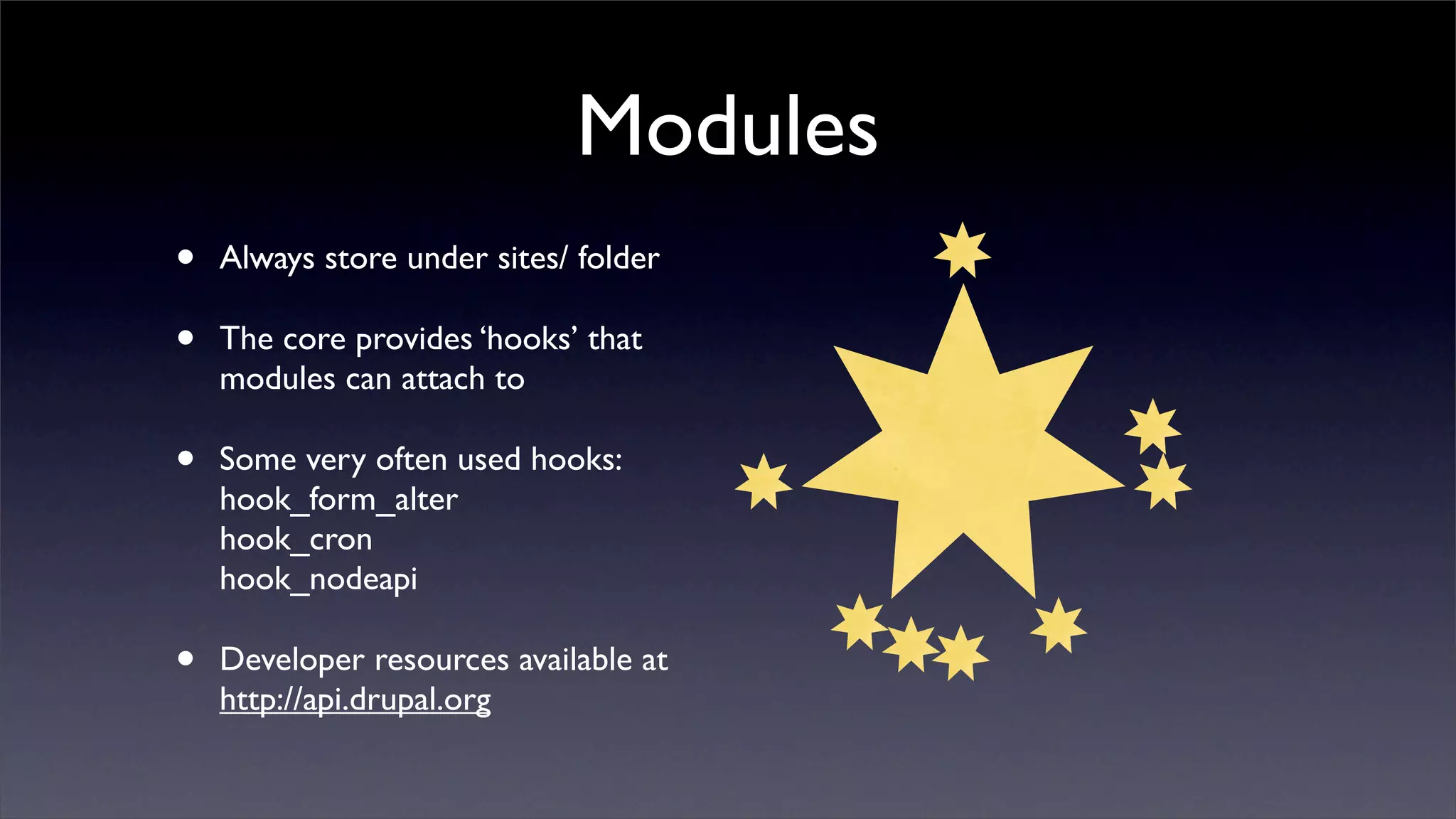
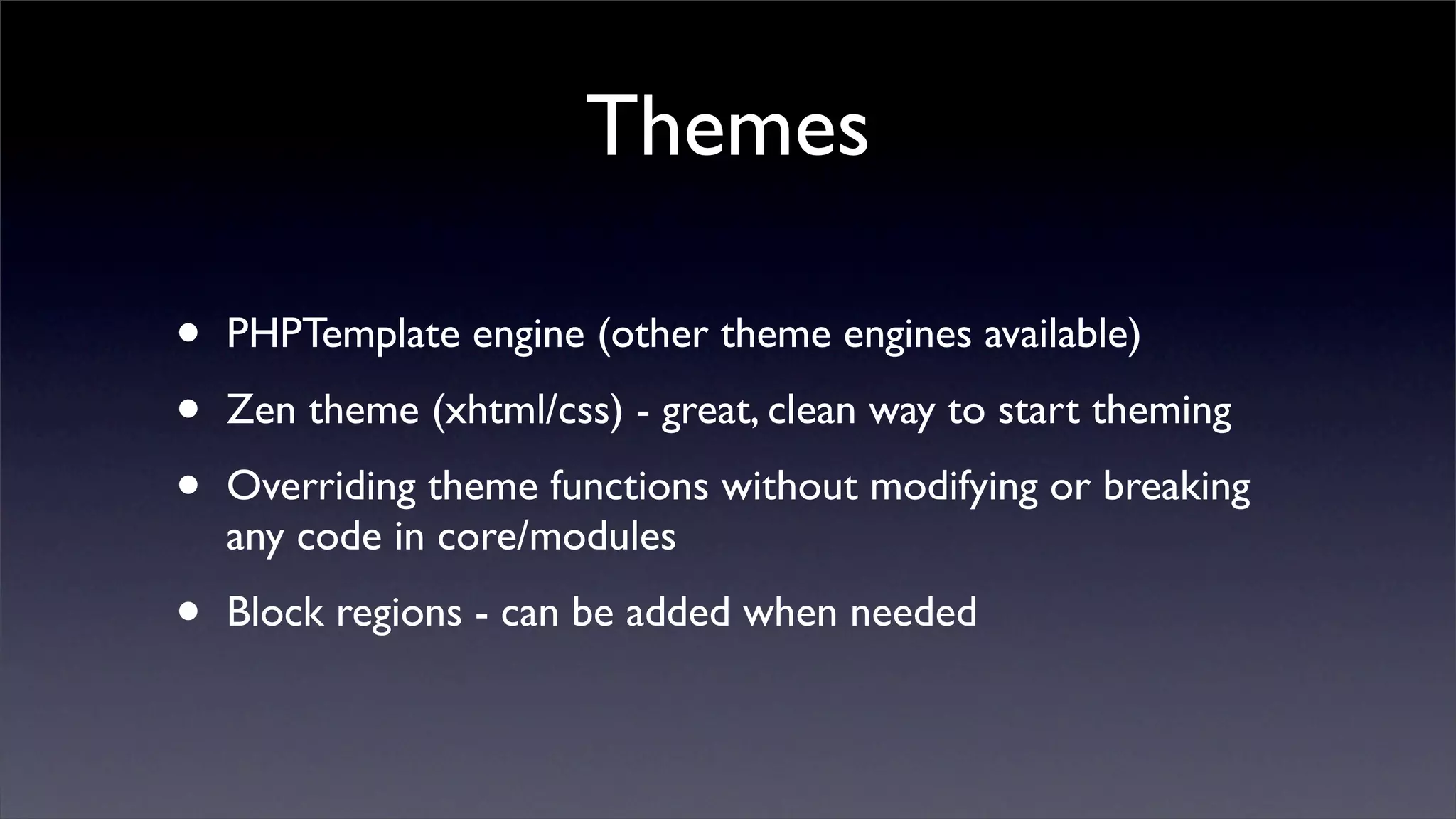
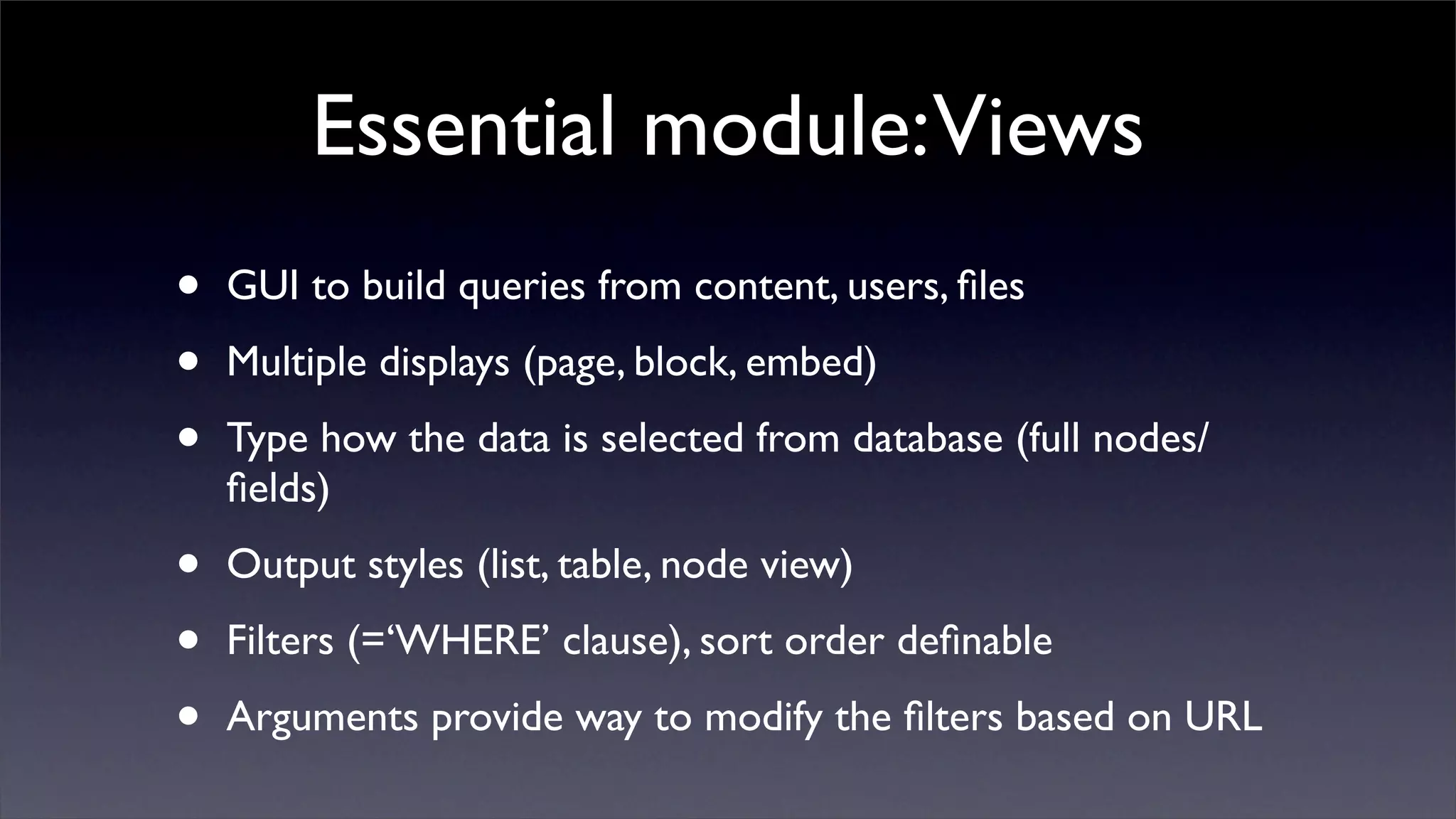
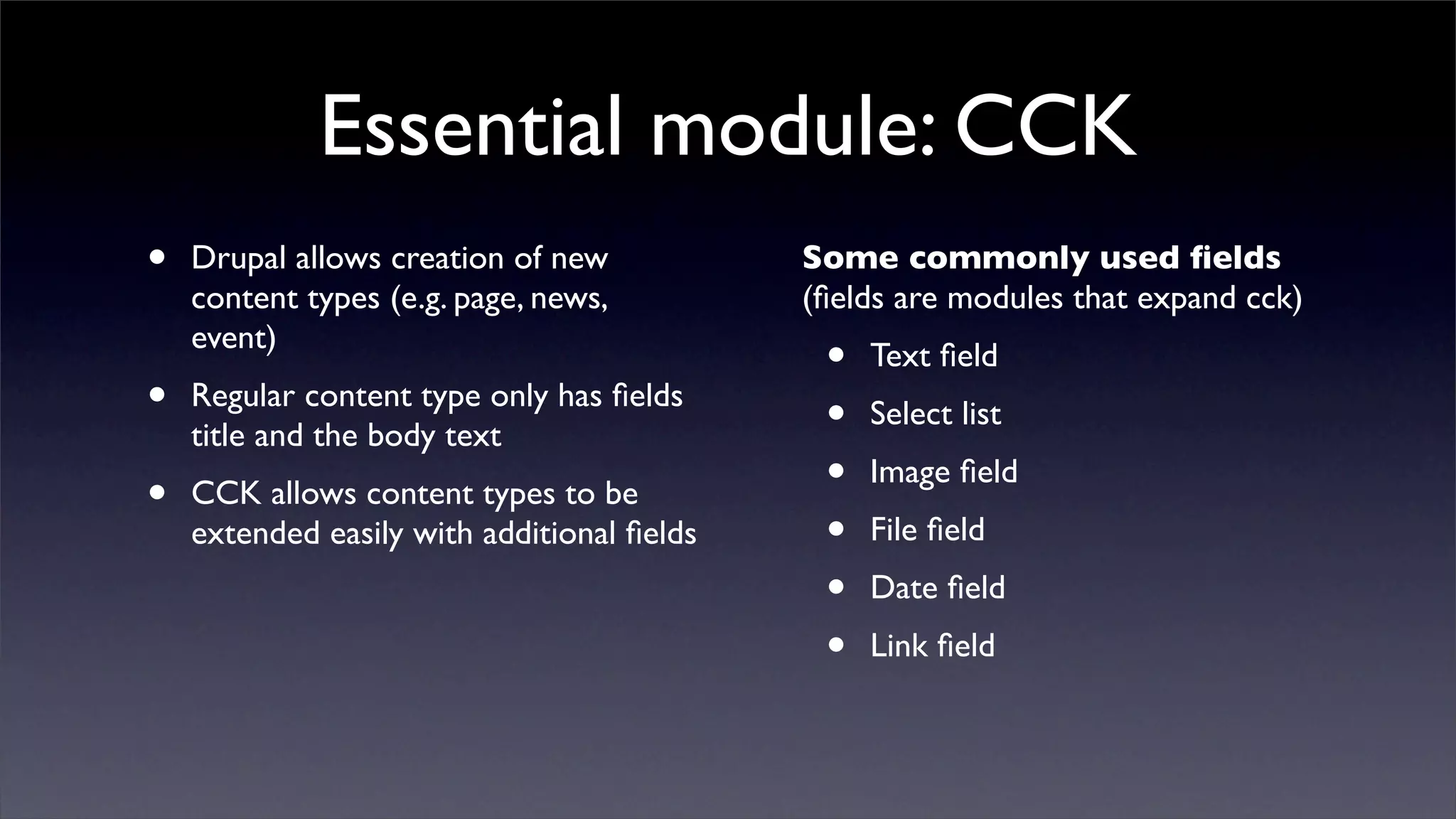
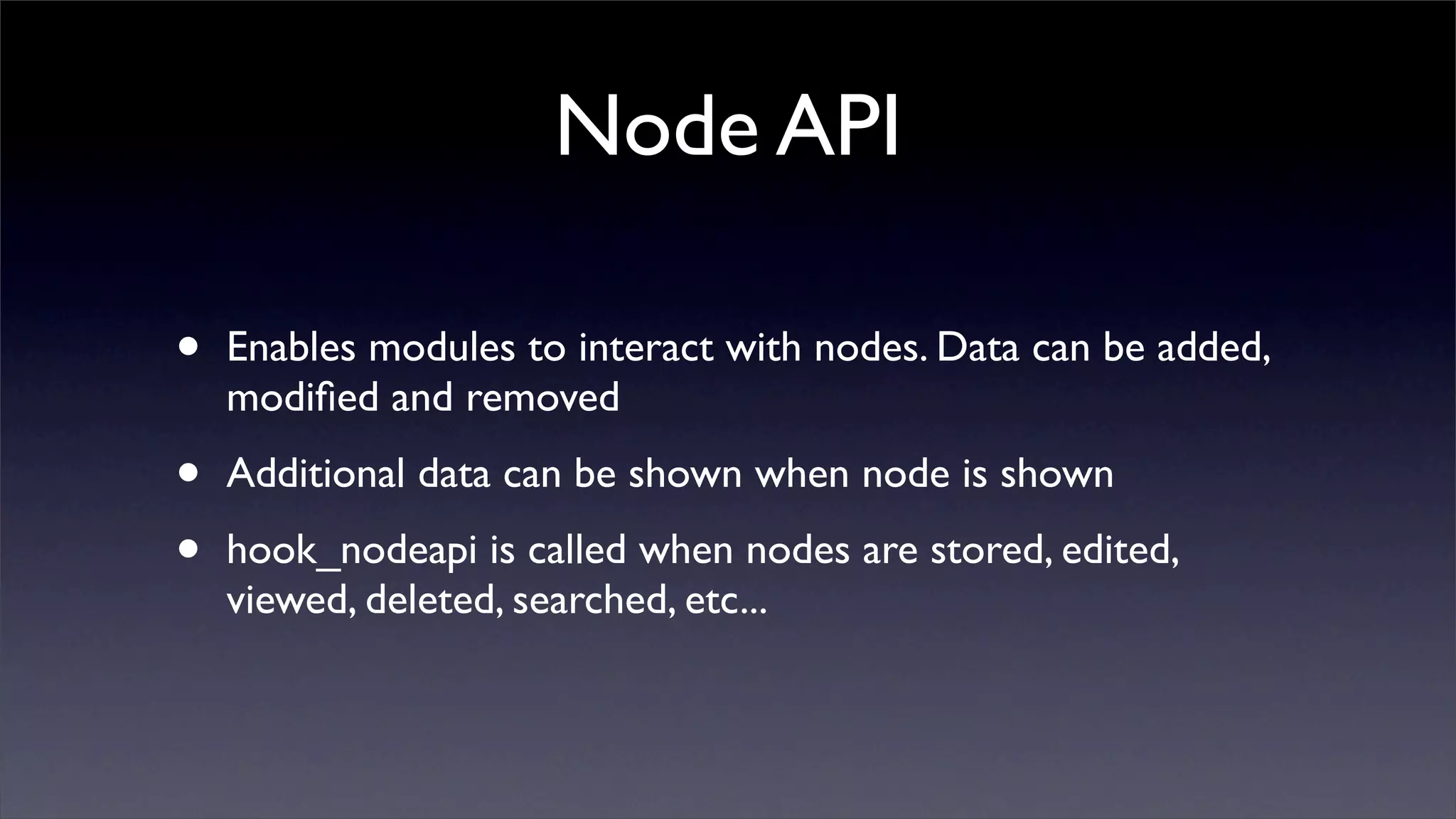
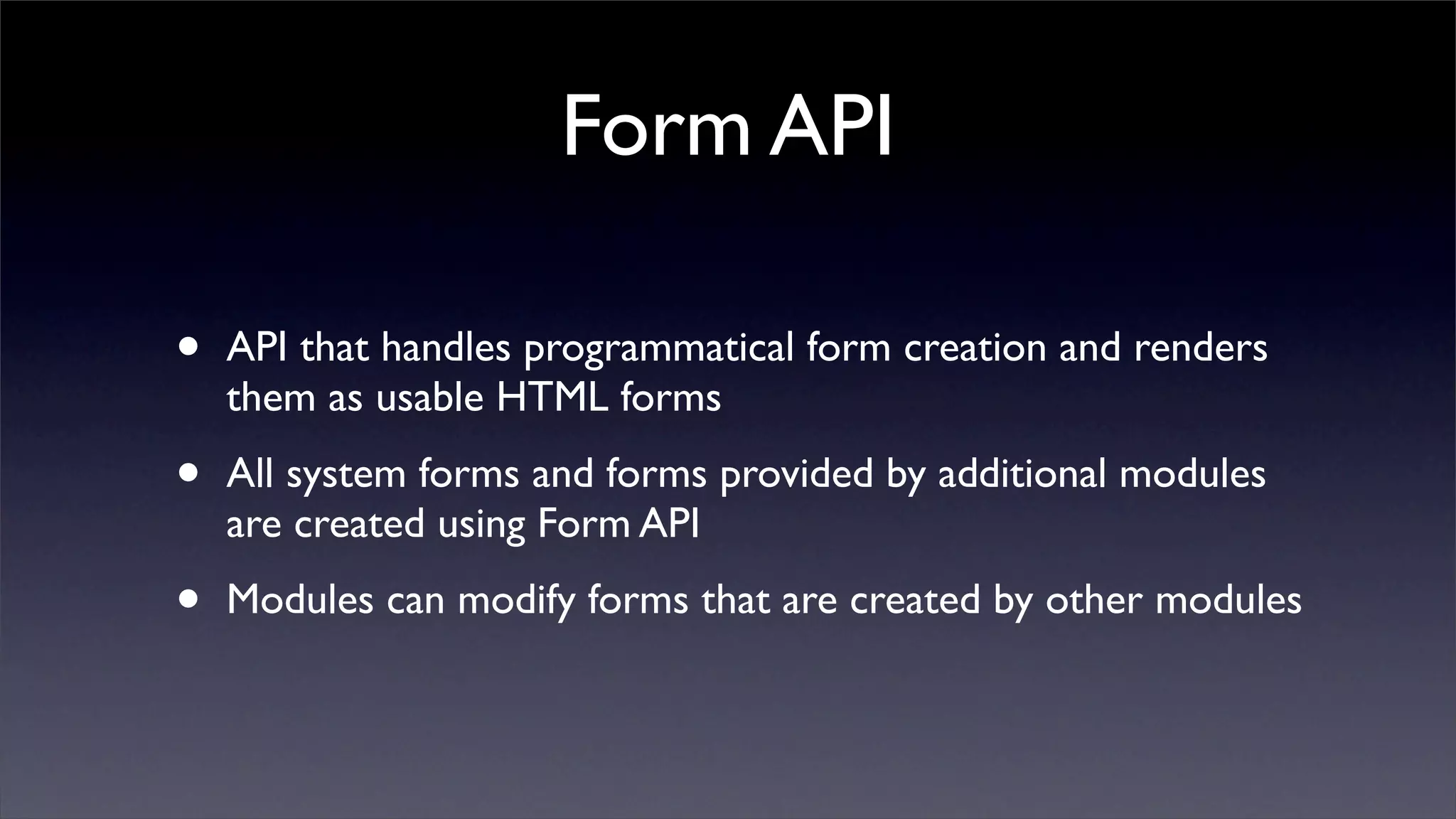
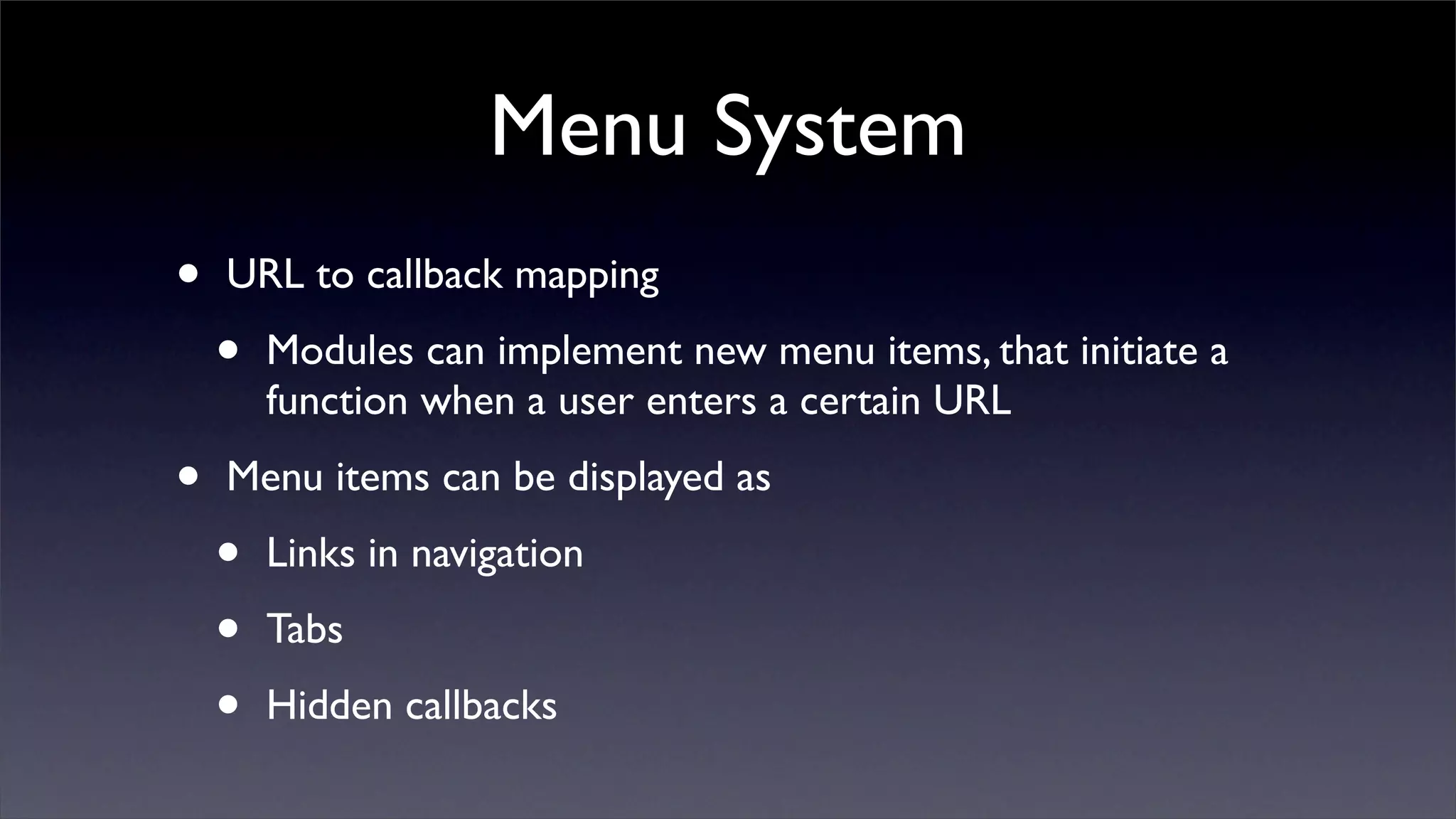
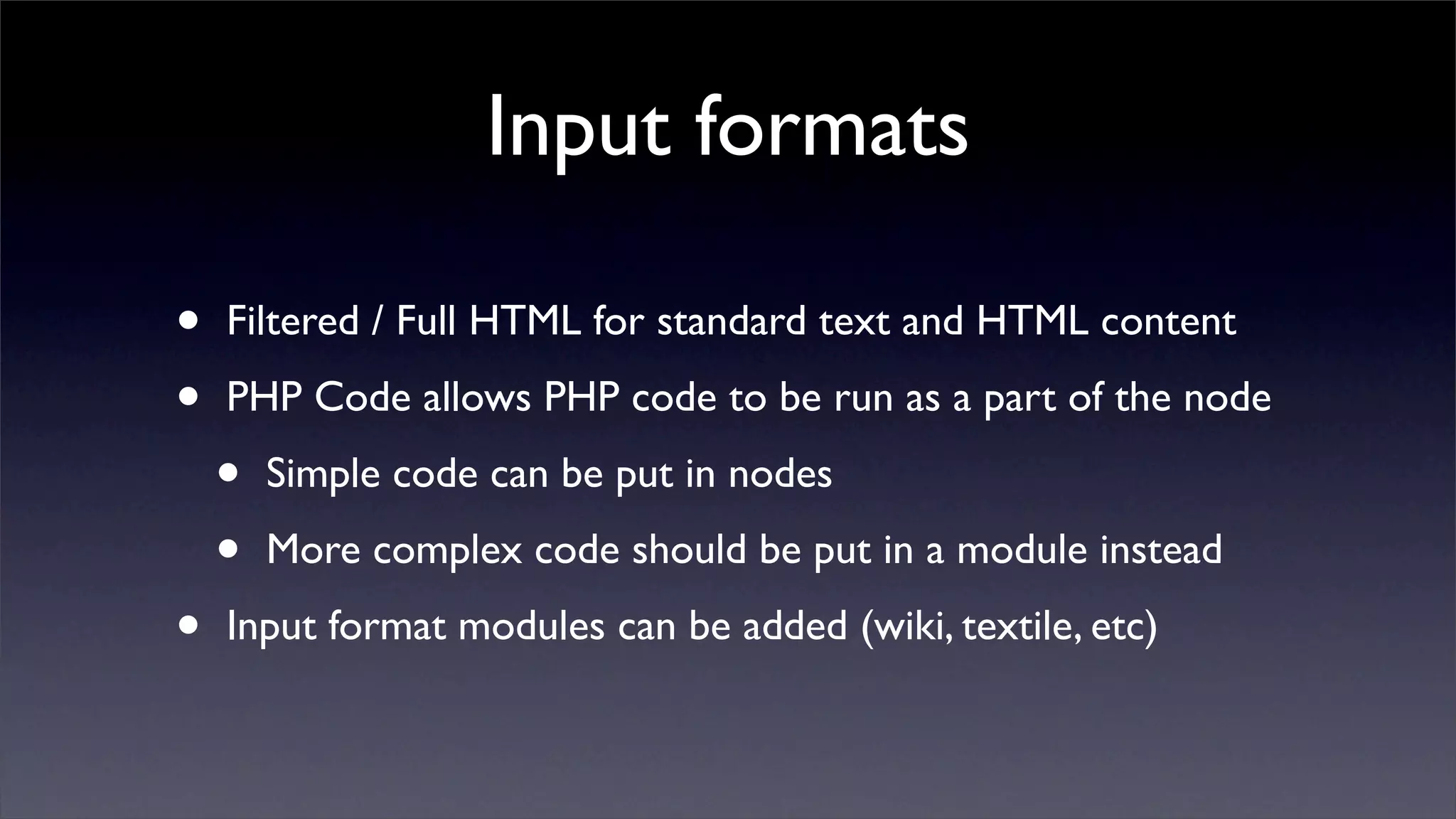
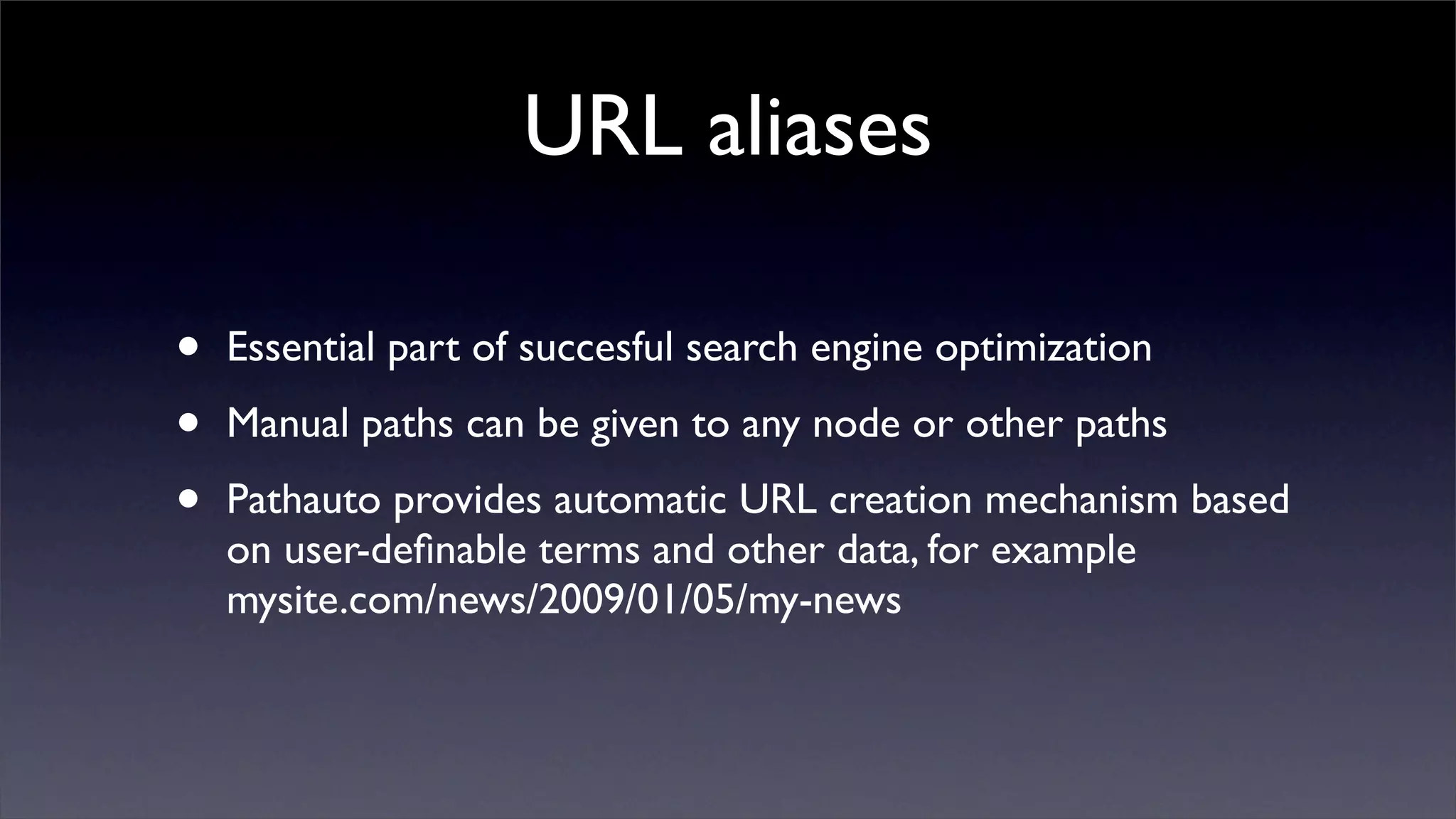
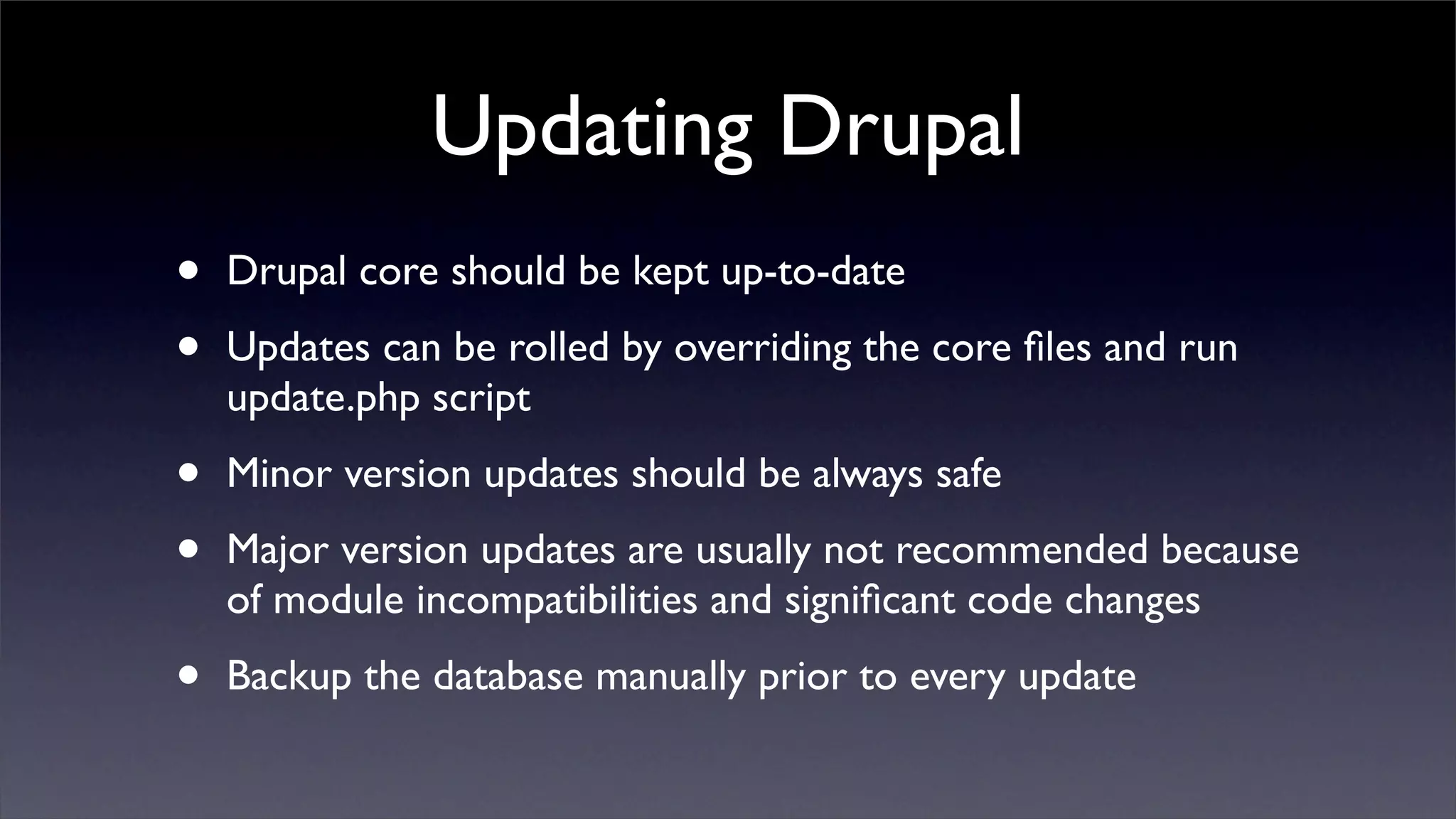
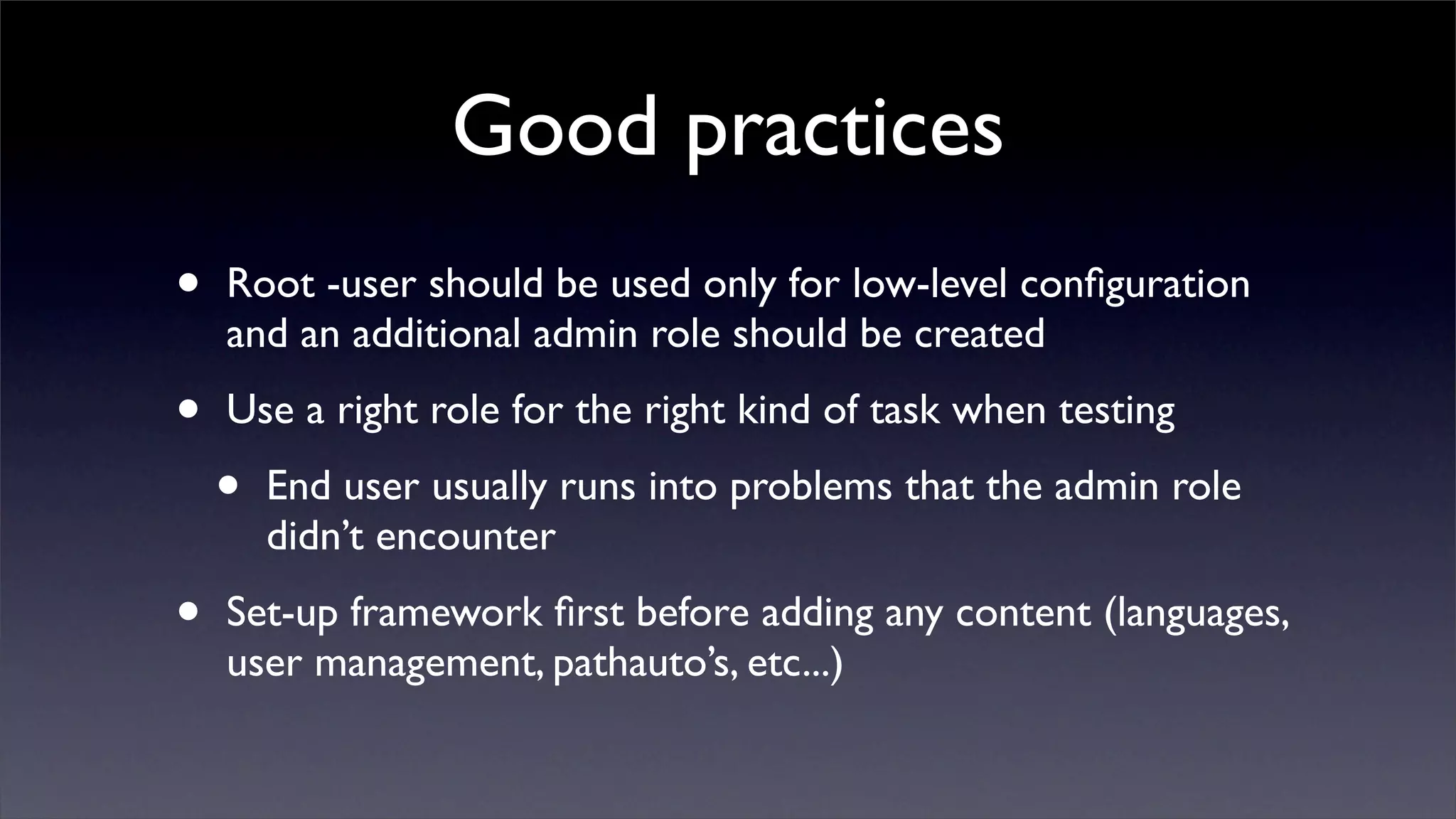
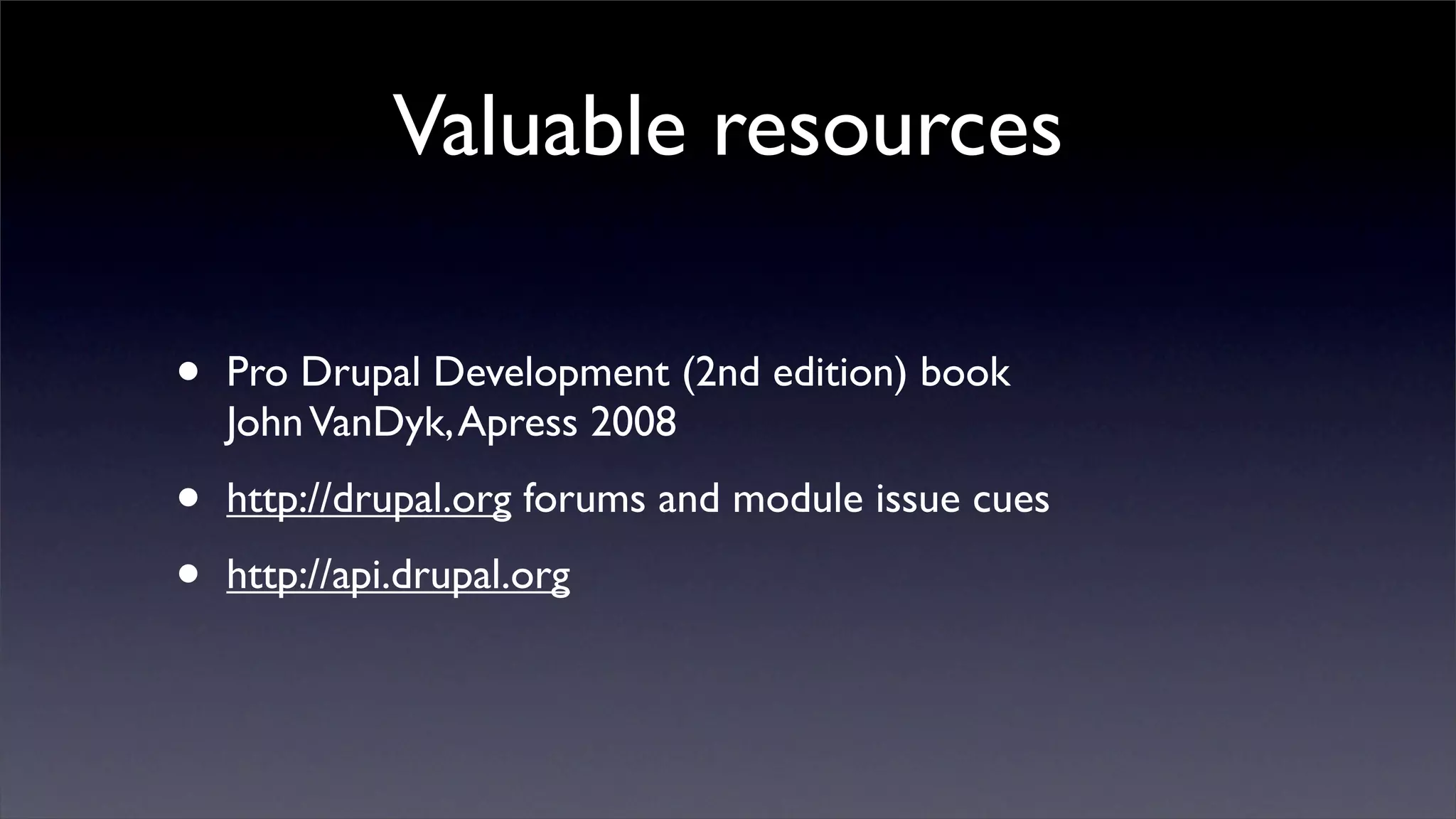


This document provides an introduction to the basics of Drupal, an open source content management system (CMS). It describes Drupal's advantages over custom or other CMS platforms, including its modular architecture, security updates, and large community. It also summarizes key Drupal concepts like nodes, taxonomy, modules, themes, and essential modules like Views and CCK. The document concludes with best practices for Drupal usage, administration, and important resources.
Introduction to Drupal, benefits over other CMSs, open source nature, security, scalability, and community support.
Overview of standalone and multisite installation processes, file structure essentials for themes and modules.
Key terms in Drupal include Node for content, taxonomy for categorization, with flexibility in content types.
Management of users and roles, including access control, and the use of external authentication.
Extension of core functionalities through modules, the importance of themes, and the PHPTemplate engine.
Functionality of Views for building queries and the CCK module for creating custom content types.
APIs that enhance node interactions, data management, and programmatic form creation in Drupal.
Overview of menu systems for routing and managing input formats for user-generated content.
Implementation of URL aliases for SEO optimization and best practices for managing site updates.
Recommendations for user role management and resources including recommended readings and community links.
Brief bio of Juha Niemi, his experience as a developer, and his commitment to Drupal.





















